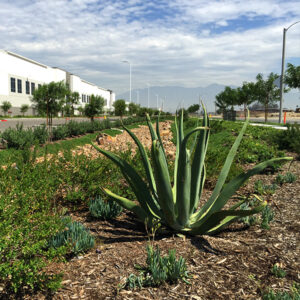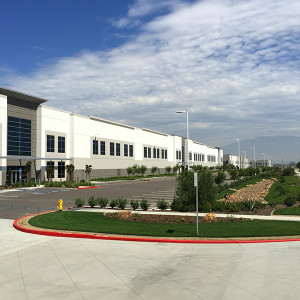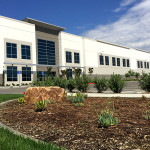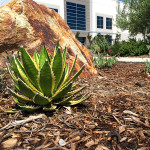
If you’re a Southern California resident, you’ve probably received a letter from your local water company detailing the restrictions in place during our severe drought. In residential neighborhoods and business parks alike, you can see the impact of the water crisis: brown lawns, dried out plants, drooping trees.
Shifting Climate, Shifting Needs
With an El Niño winter ahead, we can look forward to some heavy rains, but it’s clear that it will take more than an El Nino this year to solve our longer term water supply shortage in the state. As a result our landscaping needs have radically changed and most likely, will continue to do so in the future.
So what’s the alternative to dead lawns and withered flowers in front of our stores and around our business parks?

Go Native with Succulents, Shrubs, and Trees
A central element to drought-friendly landscaping and beautification is choosing plants native to our area. Native plants are naturally water-conserving, thereby reducing maintenance and water requirements and are restorative to our nutrient-depleted soil.
Native succulents like Dudleyas come in a variety of shapes and sizes, with colorful flowers blooming in late winter and early spring. Native shrubs like the California lilac, golden yarrow, and California red bush likewise produce flowers seasonally; when not in bloom, these shrubs still provide rich spots of color. Certain varieties of sycamore, cottonwood, and oak trees indigenous to California tolerate drought conditions beautifully, providing both shade and serenity to any landscape.
Consider the hand-selected oaks at Watson Industrial Park Chino, for example: Well suited both to the city’s rural aesthetic and to California’s increasingly dry climate, they are a landscaping choice that will flourish for many years to come with minimal water usage.
Fill in the Blanks with Grasses and Hardscape
A combination of drought-tolerant grasses and hardscape can take the place of formerly verdant lawns. Purple three-awn, deer grass, and sheep fescue are all hardy California natives that stay green with minimal watering. Additionally, hardscaping with a variety of materials in different textures and colors can be as visually appealing as greenery: Stones, pebbles, rock, and concrete can be used to create walkways and features of interest in an otherwise barren landscape.

Don’t Forget the Drought-Friendly Details
To make a truly drought-friendly landscape, consideration must be given to easily overlooked elements like mulch and groundcover, which help to conserve water that might otherwise be lost. Watering with reclaimed water is another step toward long-term drought conservation.
Aesthetically, Environmentally and Economically Pleasing
Far from dulling down Southern California, drought-conscious landscaping with native plants creates an aesthetic that is uniquely pleasing and environmentally sustainable. Your customers can enjoy the beauty of your drought-hardy plants and eco-friendly hardscape, while you enjoy the benefits of lowered maintenance and water costs.
To see just how aesthetically pleasing drought-friendly landscaping can be, click here www.watsonlandcompany.com/legacy-of-commitment. And to learn more about efficient water usage in other aspects of your business, click here www.watsonlandcompany.com/watson-land-headquarters/water-efficiency.












